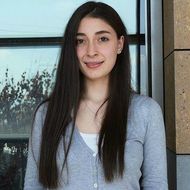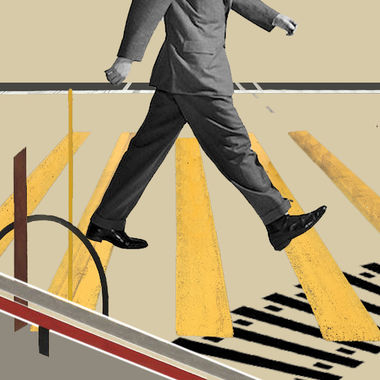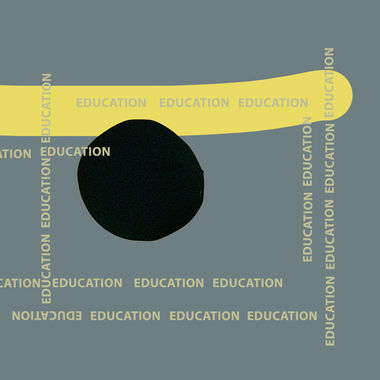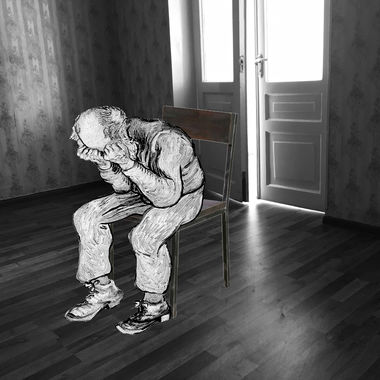Tue Dec 03 2019 · 7 min read
Desperately Seeking a More Comfortable Ride
Public Transportation Reforms in Yerevan

By Lusine Sargsyan

Overcrowded buses and traffic jams are a common sight in Yerevan and a point of frustration for those using public transportation. Following the Velvet Revolution, when then-Mayor Taron Margaryan resigned under public pressure, snap municipal elections were held on September 23, 2018. Reforming the public transportation route network was one of the election promises that Hayk Marutyan, the current Mayor of Yerevan, campaigned on, when he secured a landslide victory with 81 percent of the vote. After taking office, Marutyan said that the development and implementation of a new public transportation route network will take at least two years.
The unregulated, mostly privately-owned transportation routes that crisscross Yerevan started developing after the collapse of the Soviet Union, when Armenia was embroiled in a war with Azerbaijan over the enclave of Nagorno-Karabakh. Since Armenia was under an economic blockade, fuel scarcity was a major concern. Naturally, modes of transportation that relied on imported diesel and gasoline were of limited use. Instead, trolleybuses, the subway and an aerial cable car to Nork-Marash, which all ran on electricity, became the primary forms of transportation. Photos from the early 90s of people hanging out the windows of overcrowded trams captured the situation of public transportation in Yerevan.
The transportation sector in the capital began to be regulated in 1998, when a working group was created to design the integrated public transportation route network. “This was the first step toward having a regulated and legalized transportation system through privatized routes,” says Edgar Galstyan, the head of the Transport Department at the Municipality. “This was the beginning of the transportation network as we have it now.” After the regulations were introduced, Russian GAZelle vans, known to Yerevantsis as marshrutkas, substituted locally-produced Raf vehicles, which were quite famous during Soviet times and were used until the late 1990s.
What’s Going to Change?
In the summer of 2019, the Municipality announced that the final design of the new public transportation route network was complete. It was developed with the help of the British WYG consulting firm, which was selected through an international competition announced by the Asian Development Bank. The Municipality spent $850,000 developing the new route network. In fact, WYG officially started working on the new public transportation network at the beginning of 2017, when Taron Margaryan was still the Mayor of Yerevan. “Multiple discussions were held at the Municipality regarding the recommendations by WYG, and now the finalized document is in the government’s hands,” notes Galstyan. With the proposed changes, it is expected that instead of the current 109 routes, the transportation network will have only 42, which will consist of 11 main and 31 interim routes. The number of vehicles is also expected to decrease from the current 2039 to 939, which will include 18- and 12-meter-long buses and trolleybuses. Service will not decrease, instead routes will be streamlined and capacity of vehicles increased.
Galstyan explained that the city authorities plan to substantially decrease and eventually eliminate the number of marshrutka vans on the road. While speaking to journalists, Marutyan himself also said that 450 out of the 1330 registered vans will no longer be allowed to transport passengers because they will soon reach the maximum age limit for public passenger vehicles, which is 15 years. He also said that the introduction of the new public transportation network will be an ongoing process. Once City Council approves the recommendations, the Municipality will begin importing new buses in 2020. Galstyan noted that the new vehicles will significantly alleviate the crowding on existing buses and vans, gradually improving the network until it is fully replaced.
A report prepared by McKinsey & Company, which provides a comprehensive overview of transportation systems in 24 major cities around the world, identifies five equally important elements of urban mobility: availability, affordability, efficiency, convenience and sustainability. According to the report, these are the dimensions that affect the passenger experience the most. The report speaks about the importance of having a variety of transit options available to residents, such as rail and road infrastructure, as well as shared transport systems.
The goal of public transportation should not be turning a profit but rather solving an actual social problem, which makes affordability another important concern. Currently, the one-way cost of transport in Yerevan is 100 drams ($0.21) on buses, vans and the subway, and 50 drams ($0.10) on trolleybuses. Although no final decision has yet been made, the introduction of the new public transportation network may require an increase in price. In evaluating public transport affordability, the McKinsey report considered the price of a monthly public transport fare relative to residents’ income.
Thus, public transportation network reform is not just about replacing vehicles; it is a complex system, consisting of multiple interrelated layers. Improving the transport system requires significant investments in order to develop and maintain roads, install electronic information terminals at bus stations, introduce a new ticketing system and construct new underground parking lots, all of which are included in the proposed recommendations by WYG. “Having high-quality buses but not having a ticketing system will negatively affect the process. Having a developed ticketing system but not regulating where the taxis can stand will also affect the process,” explains Galstyan. “So if even one element is not strategically addressed, we cannot expect to have a sustainable transportation network.”
Aside from the changes in the public transportation route network, a new metro station is also expected to be constructed in the suburb of Ajapnyak (with plans for further expansion). According to the plan, a new bridge will have to be built across the Hrazdan River, allowing commuters access from both sides of the ravine. Construction of a new cable car is another strategic project introduced by the Municipality to connect the Nor Nork district with the city center.
Who’s Going to Pay For It?
Because the Municipality does not have sufficient resources to implement these projects, investors will be involved in the process. Speaking about the funding for the new transportation network, Galstyan explained that the Municipality is considering several options. “The city authorities can move forward with a transportation network that is entirely funded by the government through loans, but at the same time, we are working to see how private investors can be involved in the process as well,” added the head of the Transport Department. The strategy regarding funding will be finalized after the advantages and downsides of each option are thoroughly considered. One concern that Galstyan raised, however, was that the Municipality’s experience with Sanitek waste management company [1] has led many to prefer a government-only transportation operation, at least for the beginning of the reform. According to him, having only one operator would make the overall process easier to regulate and coordinate. “Maybe after Yerevan has an efficient public transportation network in place, we can hand its management to a private operator,” said Galstyan.
Speaking about the problems of the public transportation network, Galstyan noted that it is underdeveloped for a city like Yerevan, the population of which keeps increasing because of internal migration from rural areas. In fact, according to the census data of 2001, the population of Yerevan was about 1.1 million, 29.5 percent of which moved to the capital from regions or from abroad. Even though the urban population stopped increasing from 2000 to 2010, in 2016, 62 percent of Armenia’s total population was living in urban areas, mainly Yerevan. The increasing development gap between rural and urban communities and the attractive economic prospects of urban communities are some of the main reasons for rapid urbanization.
Car Imports Double
The increasing number of cars in Yerevan is another problem that is significantly affecting the quality of transportation services. According to the State Revenue Committee, during the first nine months of 2019, 103,600 cars were imported to Armenia, which is almost double the number of cars imported during 2018 (67,200). The alarming nature of the problem becomes more obvious when we consider the fact that most of the imported vehicles are used in Yerevan and that almost no new roads were constructed in the capital during the recent years. Galstyan explained that traffic surveys by the Municipality have shown that the increased number of cars on the roads and the resulting traffic congestion negatively affect the flow of public transportation. This rapid increase is explained by motorists trying to get ahead of a January 1, 2020 deadline, after which the customs duties on cars imported to Armenia from outside the Eurasian Economic Union (Belarus, Russia, Kazakhstan and Kyrgyzstan) will increase. Currently, most cars are imported from non-EEU member states, including Germany, the United States, Japan, Korea, Mexico and Canada.
Galstyan noted that, after the new transportation network is in place, it would be difficult for the Municipality to find 900 drivers from the current 2000, who would pass a medical examination, are respectful toward passengers and can be trusted with peoples’ lives and expensive buses. “Most of the current drivers are not going to be part of the new transportation system,” added Galstyan. Another problem is that the driver, whose only concern should be transporting people safely, often gets distracted with having to give change to passengers because buses in Yerevan do not use a ticketing system. “All of these reasons combined contributed to the current situation of the transportation system in Yerevan, which is outdated and no longer corresponds to the people's demands and needs,” says Galstyan.
--------------
1. Yerevan Municipality unilaterally terminated its contract with Sanitek waste management company in October 2019 because it had failed to provide adequate levels of service for sanitary cleaning and garbage disposal in the capital.
also read
Revitalizing Armenia’s Transport System
By Lucyann Kerry
In the second of a multi-part series, Dr. Lucyann Kerry writes that as other countries set examples and move forward to solve transport problems, Armenia may have an opportunity to use its energized political will and seek innovative solutions to its transport system.
by the same author
Europe’s Migration Policies: Deportation of Armenians on the Rise
By Lusine Sargsyan
Following changes in migration policies of EU countries, an increasing number of illegal Armenian immigrants were deported from the Schengen area. Armenia’s government has introduced a draft program, which, if adopted, will be the first initiative aimed at providing state support to deported Armenians.
Where Does Armenia’s Medical Waste Go?
By Lusine Sargsyan
What is medical waste and how should it be treated? Because of the cost involved in proper treatment, it is possible that potentially biohazardous waste is ending up in municipal dumps.
From Isolation to Inclusion: Children With Special Needs and Their Right to Education
By Lusine Sargsyan
Dismantling decades of prejudice and perceptions about people with disabilities is not an easy task. The inclusion of children with disabilities and special needs in public schools is not an exception, however, attitudes are slowly changing.
A Small Room in a Big Building: Armenia’s Senior Citizens
By Lusine Sargsyan
What happens to those senior citizens in Armenia, who don’t have families who can or want to take care of them? There are only a handful of public and private old age homes, most suffering from lack of funding and poor services.








We are pleased to open up a comments section. We look forward to hearing from you and wish to remind you to please follow our community guidelines:
EVN Report welcomes comments that contribute to a healthy discussion and spur an informed debate. All comments will be moderated, thereby any post that includes hate speech, profanity or personal attacks will not be published.